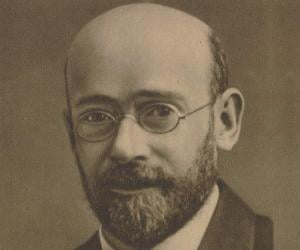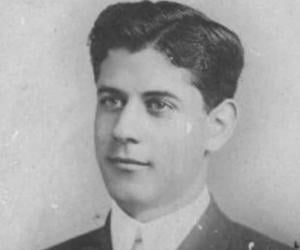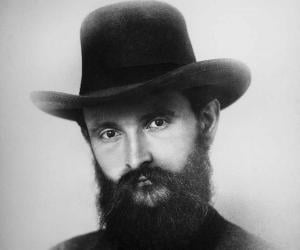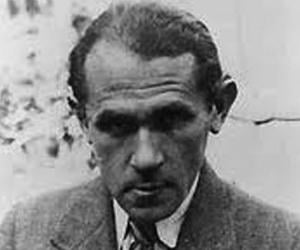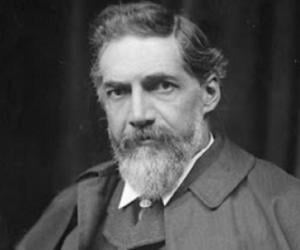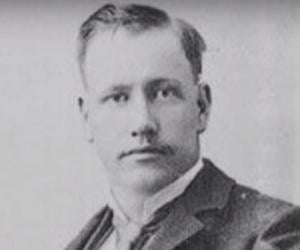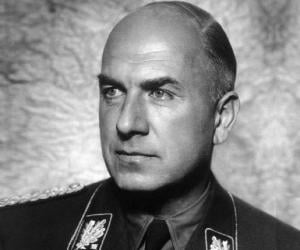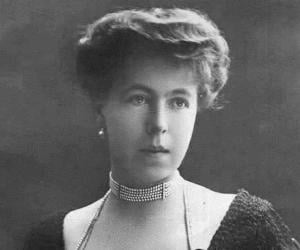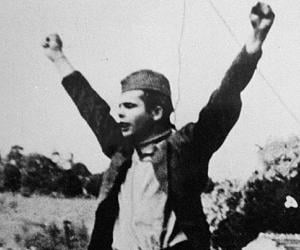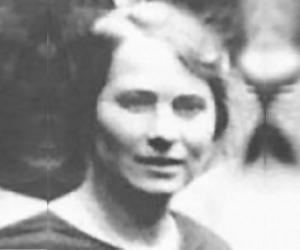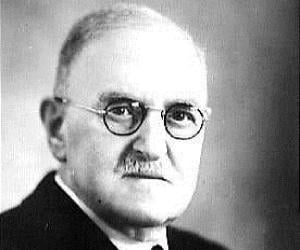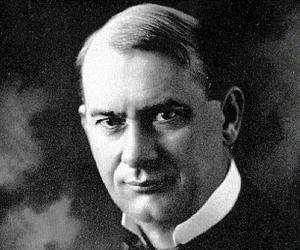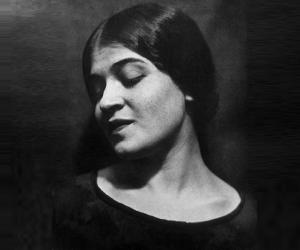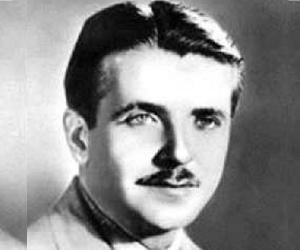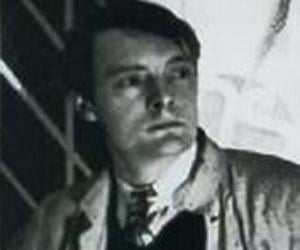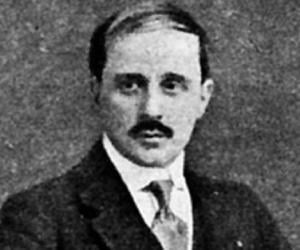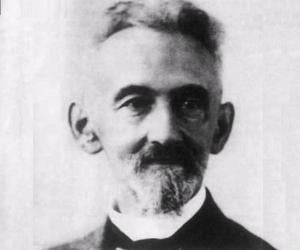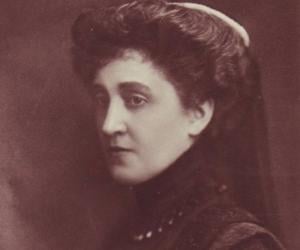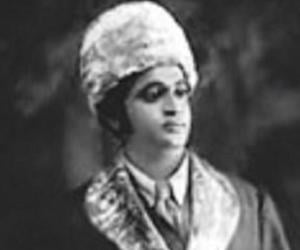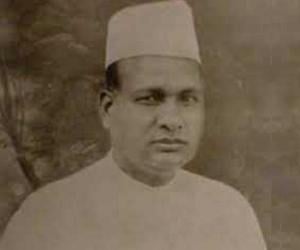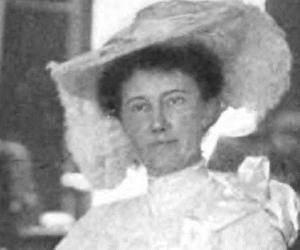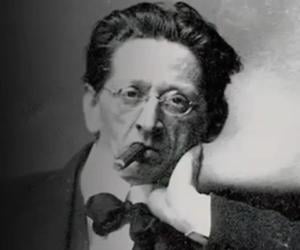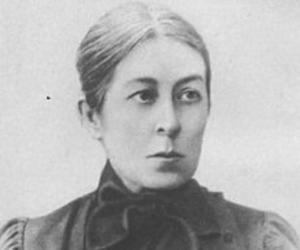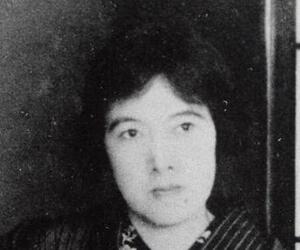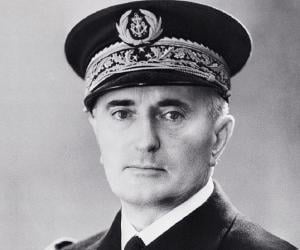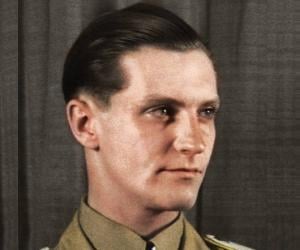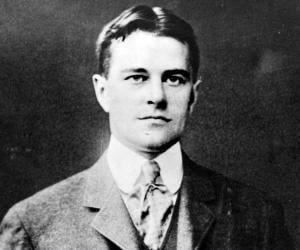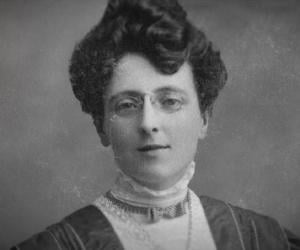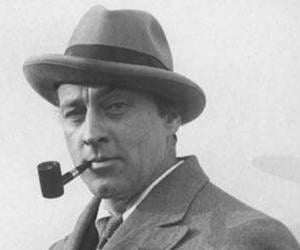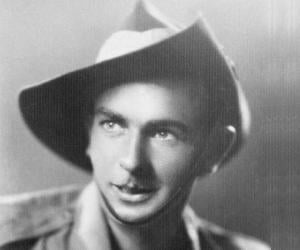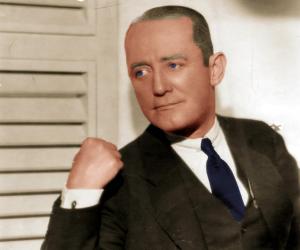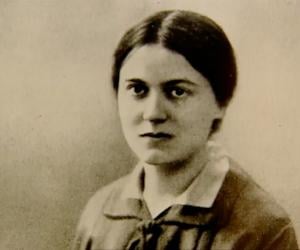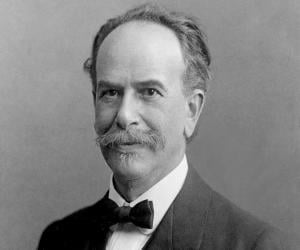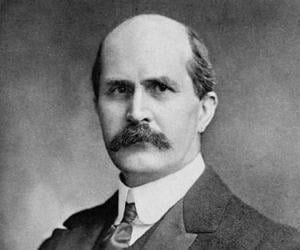Famous People Who Died In 1942
Discover the most famous people died who died in the year 1942. This list includes people like Reinhard Heydrich, Carole Lombard, John Barrymore, George M. Cohan, Lucy Maud Montgomery and many more. This list of celebrities is loosely sorted by popularity. People featured on this list, include artists, soldiers, political leaders and poets who died in 1942. This list includes people from United States, Germany, Austria & United Kingdom and many more countries.
Vote for Your Favourite People Who Died In 1942
Right IconThis ranking is based on an algorithm that combines various factors, including the votes of our users and search trends on the internet.
1
Carole Lombard(American Actress Who was Known for Her Off-Beat Roles in Screwball Comedies)
Birthdate: October 6, 1908
Sun Sign: Libra
Birthplace: Fort Wayne, Indiana, United States
Died: January 16
Carole Lombard was part of hits such as No Man of Her Own, To Be or Not to Be, and Mr. & Mrs. Smith, before dying in a plane crash at 33. She had redefined the screwball comedy genre. She was married to Hollywood legends William Powell and Clark Gable.
Birthdate: November 30, 1874
Sun Sign: Sagittarius
Birthplace: New London, Canada
Died: April 24
Canadian author Lucy Maud Montgomery is best remembered for her iconic novel Anne of Green Gables and its sequels. She had also authored countless short stories, poems, and essays. Most of her novels are set in her native Prince Edward Island. She was honored with the OBE.
3
John Barrymore(Best Known for His Silent Films: ‘Dr. Jekyll and Mr. Hyde’, ‘Sherlock Holmes’ and ‘The Sea Beast’)
Birthdate: February 15, 1882
Sun Sign: Aquarius
Birthplace: Philadelphia, Pennsylvania, United States
Died: May 29
John Barrymore, father of actor Drew Barrymore, began his career as a stage actor, appearing in plays such as Hamlet. He was nicknamed “the Great Profile” and starred in films such as Dr. Jekyll and Mr. Hyde and Sherlock Holmes. He struggled with alcoholism throughout his life.
Birthdate: January 8, 1918
Sun Sign: Capricorn
Birthplace: Melbourne
Died: August 29
Bruce Kingsbury was an Australian soldier best remembered for his efforts during the Second World War. Kingsbury lost his life while counter-attacking the Japanese forces during the Battle of Isurava. Kingsbury's counter-attack proved beneficial for the Australians and his bravery during the battle was honored with the Victoria Cross.
5
George M. Cohan(Entertainer, Playwright and Composer Who is Considered to be ‘The Father of American Musical Comedy’)
Birthdate: July 3, 1878
Sun Sign: Cancer
Birthplace: Providence, Rhode Island, United States
Died: November 5
6
Stefan Zweig(One of the Most Popular and Widely Translated Writers in the World During 1920s & 1930s)
Birthdate: November 28, 1881
Sun Sign: Sagittarius
Birthplace: Vienna, Austria
Died: February 22
Stefan Zweig was an Austrian novelist, playwright, journalist, and biographer. He was one of the most widely translated and most popular writers in the world at the height of his career. His best-known work is Sternstunden der Menschheit, in which he wrote about decisive historical events. His later years were very difficult and he died by suicide in 1942.
7
Edith Stein(Philosopher, Christian Nun and One of the Six 'Patron Saints of Europe')
Birthdate: October 12, 1891
Sun Sign: Libra
Birthplace: Wrocław, Poland
Died: August 9
Edith Stein was a German Jewish philosopher who studied at the University of Freiburg and completed her dissertation on empathy. Always interested in Catholicism, she read the autobiography of the mystic Teresa of Ávila and converted to Christianity, and became a Discalced Carmelite nun. She was killed in the Auschwitz concentration camp and is canonized as a martyr.
8
Grant Wood
(Former painter particularly well known for American Gothic (1930), which has become an iconic example of early 20th-century American art)
Birthdate: February 13, 1891
Sun Sign: Aquarius
Birthplace: Anamosa, Iowa, United States
Died: February 12
9
Janusz Korczak
(Polish Jewish Educator, Children’s Author and Pedagogue)
Birthdate: July 22, 1878
Sun Sign: Cancer
Birthplace: Warsaw, Poland
Died: August 7
A reputed Polish doctor, Henryk Goldszmit was better known by his pseudonym, Janusz Korczak, which he used to write several children’s books. Apart from working as a pediatrician and a military doctor, he also owned a Jewish orphanage and stayed with the children while the Germans deported him and other staff to Treblinka.
10
José Raúl Capablanca
(Cuban Chess Player)
Birthdate: November 19, 1888
Sun Sign: Scorpio
Birthplace: Havana, Cuba
Died: March 8
11
Robert Bosch
(Entrepreneur, Inventor, Artisan)
Birthdate: September 23, 1861
Sun Sign: Libra
Birthplace: Felkirchen
Died: March 12
The founder of the German engineering and technological MNC Bosch, Robert Bosch was born to a farmer in a south Germany village. He is also remembered as one of the first Germans to introduce 8-hour work days. He also invented the high-voltage spark plug and magneto for automobiles.
12
Bronislaw Malinowski
(Anthropologist, Sociologist)
Birthdate: March 15, 1884
Sun Sign: Pisces
Birthplace: Kraków, Poland
Died: 1942 AD
Birthdate: May 31, 1860
Sun Sign: Gemini
Birthplace: Munich
Died: January 22
Part of the Camden Town Group of painters, who showcased both Impressionist and Post-Impressionist art, German-born British painter Walter Sickert liked painting both people and scenes. His work Jack the Ripper's Bedroom gave rise to speculations that he could have been either the killer or his accomplice.
14
Franz Boas(German–American Anthropologist and a Pioneer of Modern Anthropology)
Birthdate: July 9, 1858
Sun Sign: Cancer
Birthplace: Minden, Germany
Died: December 21
Remembered for his research on cultural relativism, German-born American anthropologist Franz Boas is often referred to as the Father of American Anthropology. The son of a merchant, he was a sickly child who grew up reading a lot. He also studied folklore and developed it as an academic discipline.
15
Bruno Schulz
(Writer and One of the Great Polish-Language Prose Stylists of the 20th Century)
Birthdate: July 12, 1892
Sun Sign: Cancer
Birthplace: Drohobych, Ukraine
Died: November 19
One of the best Polish authors of the 20th century, Bruno Schulz is remembered for his iconic works such as The Cinnamon Shops, a collection of short stories that had a Kafkaesque style. He was shot dead by a Nazi officer while returning home with a loaf of bread.
16
Sir Flinders Petrie
(Egyptologist)
Birthdate: June 3, 1853
Sun Sign: Gemini
Birthplace: London, England
Died: July 28
17
William G. Morgan
(American Educator and Inventor of Volleyball)
Birthdate: January 23, 1870
Sun Sign: Aquarius
Birthplace: Lockport, New York, United States
Died: December 27
Birthdate: July 2, 1862
Sun Sign: Cancer
Birthplace: Wigton, England, United Kingdom
Died: March 12
William Henry Bragg was an English physicist, chemist, and mathematician. He is best known for sharing the 1915 Nobel Prize in Physics with his son Lawrence Bragg for their work in the analysis of crystal structure by means of X-rays. William Henry Bragg had an illustrious academic career and was elected president of the Royal Society in 1935.
19
Fritz Todt
(German Civil Engineer and Architect)
Birthdate: September 4, 1891
Sun Sign: Virgo
Birthplace: Pforzheim, Germany
Died: February 8
Fritz Todt was a German civil engineer and architect. A senior Nazi, Todt oversaw the construction of Reichsautobahnen, a controlled-access highway, and also served as the Reich Minister for Armaments and Ammunition. Before the start of the Second World War, Todt initiated a military-engineering company called Organisation Todt that oversaw the construction of many Nazi concentration camps.
20
Charlie Christian
(Guitarist)
Birthdate: July 29, 1916
Sun Sign: Leo
Birthplace: Bonham, Texas, United States
Died: March 2
21
Princess Alexandra of Saxe-Coburg and Gotha
(Aristocrat)
Birthdate: September 1, 1878
Sun Sign: Virgo
Birthplace: Schloss Rosenau, Coburg, Rödental, Germany
Died: April 16
22
Teddy Sheean
(Sailor, Military personnel)
Birthdate: December 28, 1923
Sun Sign: Capricorn
Birthplace: Lower Barrington, Australia
Died: December 1
Tasmanian war veteran Teddy Sheean was initially a farm laborer and then joined the Australian navy. Seventy-eight years after he died after strapping himself to a sinking HMAS Armidale’s anti-aircraft gun and shooting at the attacking Japanese war planes, he was awarded with the Victoria Cross.
23
Stjepan Filipović
(Yugoslav Croat Communist Leader Who Became an Icon of Resistance to Fascism)
Birthdate: January 27, 1916
Sun Sign: Aquarius
Birthplace: Croatia
Died: May 22
Yugoslav Croat communist Stjepan Filipović became an icon of opposition to fascism when a picture of him with his arms raised just prior to his execution by the Germans in 1942 became public. He was a major figure of the 1941 Partisan uprising in Serbia and was posthumously named People's Hero of Yugoslavia.
24
Sabina Spielrein
(Psychiatrist)
Birthdate: October 25, 1885
Sun Sign: Scorpio
Birthplace: Rostov-on-Don, Russian Empire
Died: August 11
Sabina Spielrein was a Russian physician who also worked as a psychoanalyst, psychiatrist, and teacher during an illustrious professional career that spanned 30 years. A pioneer of psychoanalysis, Spielrein was the first person to bring in and popularize the concept of the death instinct. Sabina Spielrein was also one of the earliest psychoanalysts to study schizophrenia in detail.
25
Tamon Yamaguchi
(Military officer)
Birthdate: August 17, 1892
Sun Sign: Leo
Birthplace: Tokyo, Japan
Died: June 5
26
Gerard Philips
(Entrepreneur)
Birthdate: October 9, 1858
Sun Sign: Libra
Birthplace: Zaltbommel
Died: January 26
27
Ivan Bilibin
(Russian Illustrator and Stage Designer)
Birthdate: August 16, 1876
Sun Sign: Leo
Birthplace: Saint Petersburg, Russia
Died: February 7
Ivan Bilibin was a Russian stage designer and illustrator. Inspired by the culture and art of Ruthenia, Bilibin established himself as an important illustrator. He is remembered for his contribution to Slavic folklore and Russian folk tales. As a stage designer, he contributed to the Ballets Russes. Ivan Bilibin is also credited with co-founding the Union of Russian Artists.
28
Joseph Franklin Rutherford
(American Lawyer and Judge)
Birthdate: November 8, 1869
Sun Sign: Scorpio
Birthplace: Versailles, Missouri, United States
Died: January 8
Joseph Franklin Rutherford was an American lawyer who later developed an interest in the teachings of Charles Taze Russell. Eventually, he joined the Bible Student movement and later became the president of the Watch Tower Tract Society. Also an author, Joseph Franklin Rutherford wrote 21 books and distributed almost 400 million booklets and books.
Birthdate: January 8, 1925
Sun Sign: Capricorn
Birthplace: Hamburg
Died: October 27
30
Tina Modotti
(Photographer Known for Her Symbolic Close-Ups and Images of Mexican Workers)
Birthdate: August 17, 1896
Sun Sign: Leo
Birthplace: Udine, Italy
Died: January 5
Italian-American photographer Tina Modotti was the daughter of migrant laborers in Austria. She later worked in a textile factory in Italy, before moving to the U.S., where she acted in Italian theater. Initially excelling in still lifes and portraits, she later gained fame for her signature close-ups of Mexican workers.
Birthdate: November 2, 1908
Sun Sign: Scorpio
Birthplace: Hilbert, Wisconsin, United States
Died: June 2
32
Eric Ravilious
(painter, illustrator)
Birthdate: June 22, 1903
Sun Sign: Cancer
Birthplace: Acton, London
Died: September 2
33
Michel Fokine
(Russian Choreographer and Dancer)
Birthdate: April 23, 1880
Sun Sign: Taurus
Birthplace: Saint Petersburg, Russia
Died: August 22
Michel Fokine was a Russian dancer and choreographer whose pieces are performed internationally to this day. Fokine is credited with choreographing the works of popular dancers like Anna Pavlova. Renowned for his groundbreaking works, such as Le Pavillon d'Armide, Michel Fokine has been portrayed in a couple of films, namely Nijinsky and A Woman for All Time.
34
Irene Nemirovsky
(Novelist)
Birthdate: February 24, 1903
Sun Sign: Pisces
Birthplace: Kiev, Ukraine, Russian Empire
Died: August 17
35
Felix Hausdorff
(German Mathematician)
Birthdate: November 8, 1868
Sun Sign: Scorpio
Birthplace: Wrocław, Poland
Died: January 26
While German mathematician Felix Hausdorff initially wished to become a musician, parental pressure led him to choose math. Considered one of the pioneers of modern topology, he made major contributions to set theory and functional analysis. He died of suicide, along with his wife and sister-in-law, instead of moving to a Nazi camp.
36
Infanta Marie Anne of Portugal
(Noblewomen)
Birthdate: July 13, 1861
Sun Sign: Cancer
Birthplace: Kloster Bronnbach, Wertheim am Main, Germany
Died: July 31
37
Harro Schulze-Boysen
(German Publicist and Military Officer Who was Active During the Second World War)
Birthdate: September 2, 1909
Sun Sign: Virgo
Birthplace: Kiel, Germany
Died: December 22
Harro Schulze-Boysen was a German publicist and military officer who was active during the Second World War. He is credited with publishing a left-leaning political magazine called Der Gegner (The Opponent). Personalities like Karl Korsch, Ernst von Salomon, and Raoul Hausmann among others contributed to the content of the magazine.
38
Deenanath Mangeshkar
(Actor, Composer)
Birthdate: December 29, 1900
Sun Sign: Capricorn
Birthplace: Mangeshi village
Died: April 24
Birthdate: June 26, 1925
Sun Sign: Cancer
Birthplace: Volgograd, Russia
Died: December 23
40
Jamnalal Bajaj
(Businessperson, Social Activist)
Birthdate: November 4, 1889
Sun Sign: Scorpio
Birthplace: Sikar, India
Died: February 11
41
Libertas Schulze-Boysen
(Revolutionary)
Birthdate: November 20, 1913
Sun Sign: Scorpio
Birthplace: Paris, France
Died: December 22
Libertas Schulze-Boysen was a German aristocrat who fought against the Nazi regime. Libertas, who had contact with important people in different strata of society, started documenting the atrocities carried out by the Nazis during the early 1940s. She also played an important role in the formation of the Red Orchestra. Libertas Schulze-Boysen was executed by the Nazis, at the age of 29.
42
Carolyn Wells
(Former Writer remembered largely for her popular mysteries, children’s books, and humorous verse.)
Birthdate: June 18, 1862
Sun Sign: Gemini
Birthplace: Rahway, New Jersey, United States
Died: March 26
43
Alexander von Zemlinsky
(Composer)
Birthdate: October 14, 1871
Sun Sign: Libra
Birthplace: Vienna, Austria
Died: March 15
44
William Henry Jackson
(Painter, Photographer, Explorer, Artist, Mountaineer)
Birthdate: April 4, 1843
Sun Sign: Aries
Birthplace: Keeseville
Died: June 30
45
Vera Figner
(Revolutionary Whose Work to Free All Russian People Led to Her Involvement in the Assassination of 'Alexander II')
Birthdate: July 7, 1852
Sun Sign: Cancer
Birthplace: Kazan, Russia
Died: June 15
Russian revolutionary Vera Figner was a major figure of the Populist (Narodnik) movement. Initially a medical student, she later left her studies midway to devote herself to politics. She also left her husband for her revolutionary cause and became associated with the Zemlya i Volya party.
46
Yosano Akiko
(One of the Most Infuential and the Most Controversial Post-Classical Woman Poets of Japan)
Birthdate: December 7, 1878
Sun Sign: Sagittarius
Birthplace: Sakai, Osaka, Japan
Died: May 29
Yosano Akiko was a Japanese author, social reformer, poet, pacifist, and feminist. One of the most controversial and popular woman poets of Japan, Yosano was an important exponent of a genre of classical Japanese poetry called Tanka. She also contributed immensely to several publications like Bluestocking.
47
Miguel Hernández
(Spanish Poet and Playwright)
Birthdate: October 30, 1910
Sun Sign: Scorpio
Birthplace: Orihuela, Spain
Died: March 28
Miguel Hernández was a 20th-century Spanish-language poet and playwright. He was associated with the Generation of '27 and the Generation of '36 movements. He had a difficult childhood and was mostly self-taught. He became a prominent literary figure at a young age. His poems are counted among the finest pieces of Spanish poetry of the 20th century.
48
François Darlan
(Politician, Military personnel)
Birthdate: August 7, 1881
Sun Sign: Leo
Birthplace: Nérac
Died: December 24
49
Hans-Joachim Marseille
(German Luftwaffe Fighter Pilot and Flying Ace During World War Ii)
Birthdate: December 13, 1919
Sun Sign: Sagittarius
Birthplace: Berlin, Germany
Died: September 30
Remembered for his aerial battles during the North African Campaign, Hans-Joachim Marseille was a German Luftwaffe fighter pilot and a flying ace, who claimed a total of 158 victories, out of which 151 victories were against the British Commonwealth's Desert Air Force. Nicknamed Star of Africa, he is also credited with shooting down seventeen Allied fighters in a single day.
50
Albert Payson Terhune
(Author)
Birthdate: December 21, 1872
Sun Sign: Sagittarius
Birthplace: Newark, New Jersey, United States
Died: February 18

